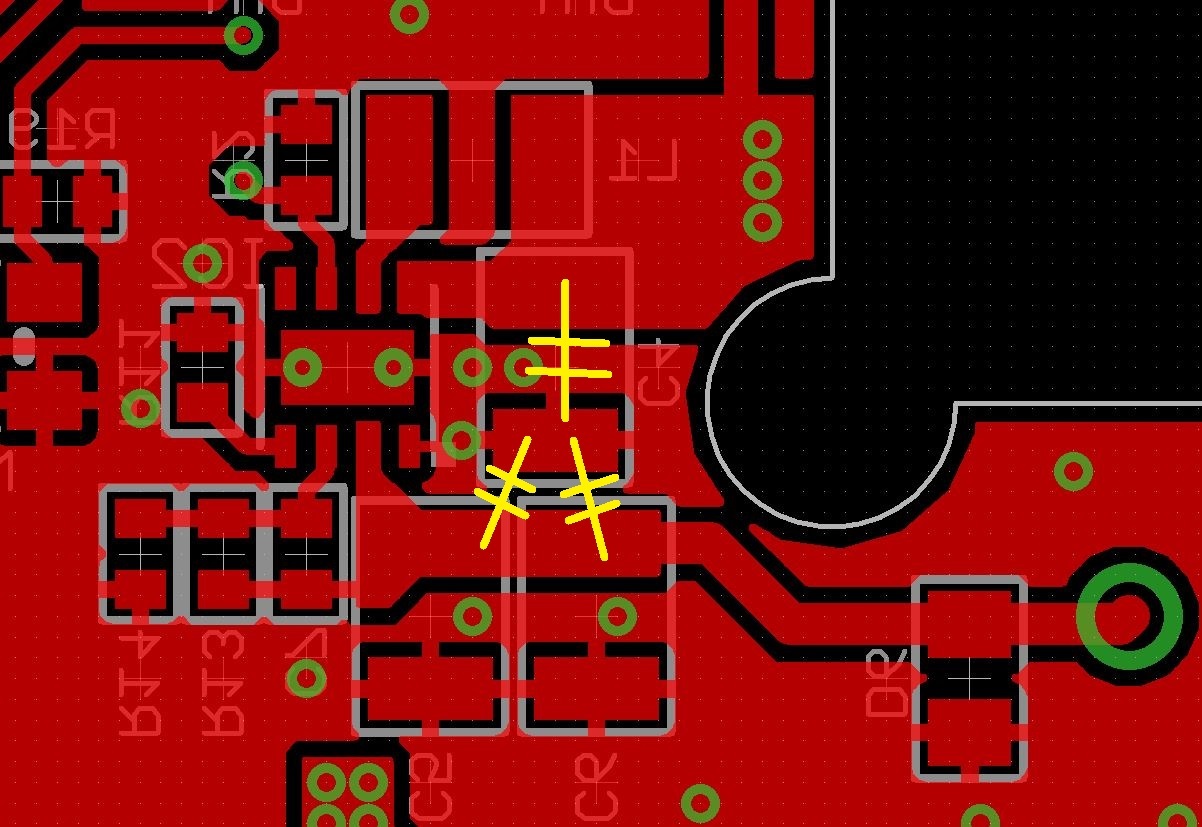After working with a new prototype for 15-30 minutes or more, the shutdown current starts to rise. At first, it was ~1uA, then it was 40uA, then it continued to climb and now it is consuming 4 mA in shutdown mode. This is the second prototype that exhibits this type of behavior. The first prototype was as high as 10 mA shutdown current and pretty much stayed around there. I went so far as to remove every component from the prototype, leaving just the TPS61252, in order to determine that it was the source of the current draw.
I can think of a few things in my design that can be improved but I allowed them so that I could more easily fit components in the available space. I never suspected that making these compromises might cause a shutdown current malfunction. Can someone please evaluate my design and tell me if a glaring error is discovered.
Here is the schematic:
I measured voltages while the device is in shutdown:
- Pin 1 (GND): 0V
- Pin 2 (VOUT): 0V
- Pin 3 (FB): 0V
- Pin 4 (ILIM): 0V
- Pin 5 (PG): 0V / floating
- Pin 6 (EN): 0V
- Pin 7 (SW): 3.52V
- Pin 8 (VIN): 3.52V
I also removed the inductor so that Pin 7 is not connected and this did not solve the problem. So the leakage current is coming from Pin 8.
I don't think that the schematic has any issues. It must be the layout. My biggest mistake (probably) is the PCB stack-up. It has 4 layers with a ground plane and a power plane. The power plane is directly beneath the TPS61252, not the ground plane. Also, the footprint contains thermals which "choke" the ground pour a bit, potentially causing more issues with the ground path.
Here is a picture (mirrored because it is a top-view of the bottom layer):
I can send gerber files if needed.
About to receive a third prototype tomorrow that I can test. If you have any recommended steps to test this prototype, please advise.
Regards,
Seth Berggren


